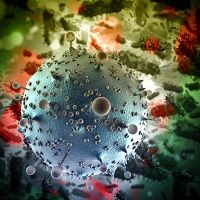Article
The HIV Target That We're Not Talking About
Author(s):
Researchers from the University of North Carolina (UNC) analyzed how the human immunodeficiency virus (HIV) attacks macrophages – a target that, up until now, was believed to have little to do with infection.

Researchers from the University of North Carolina (UNC) analyzed how the human immunodeficiency virus (HIV) attacks macrophages — a target that, up until now, was believed to have little to do with infection.
Macrophages are large, white blood cells in the liver, brain, and connective tissues all over the body. The cells ingest foreign material, such as CD4 T-cells that are infected with HIV. Previous studies looking at this area concluded that this is how macrophages also become infected. However, this belief is challenged by the new study conducted by UNC experts. One of the researchers, Jenna Bone Honeycutt, PhD, spoke with MD Magazine about the study and explained how this changes the way we thought we knew HIV.
Honeycutt explained that it’s been known that HIV can be present in macrophages in the 1980’s, but it didn’t become of particular interest until 2014. Two studies, one in monkeys and one in human culture of cells, began uncovering what materials were necessary to aid in the HIV replication process. This is where talk of macrophages, T-cells, and infection really began to take off.
- Related: ART Impacts How HIV Establishes Itself in the Female Reproductive Tract
In the latest research, the team from the Division of Infectious Diseases at UNC used humanized myeloid-only mouse models. Through their work, they were able to demonstrate that HIV continues to replicate in macrophages even without T-cells and those macrophages are distributed in various tissues. In addition, macrophages can establish infection in new hosts, as described in The Journal of Clinical Investigation.
“The biggest takeaway with all of this was that macrophages in the tissues represent a viable source of viral production, and this was in the complete absence of T-cells,” Honeycutt explained. “So what we’re showing is that macrophages are a genuine and bona fide target for HIV replication in vivo.”
Macrophages should not be discounted when developing new, novel HIV therapies. As Honeycutt said, “While it may not apply to all patients, it may emphasize to us that better screening to figure out which patients may be harboring viruses that are capable of infecting macrophages.” It can also help determine if a patient has an additional cell type that can replicate the virus as well.
The next phase in this research is already underway and ongoing as the team assesses if antiretroviral therapy (ART) can attack the virus in macrophages. A regimen containing emtricitabine, tenofovir, and raltagrivir is of particular interest, and experiments conducted thus far have indicated that existing HIV treatments can work on macrophages.
The long-term goal for Honeycutt and UNC team is to find a cure for HIV. With continuing research and promising results, it’s not far-fetched to think that that goal will become a reality.
>>> Watch the full interview with Dr. Honeycutt — part 1 and part 2.




